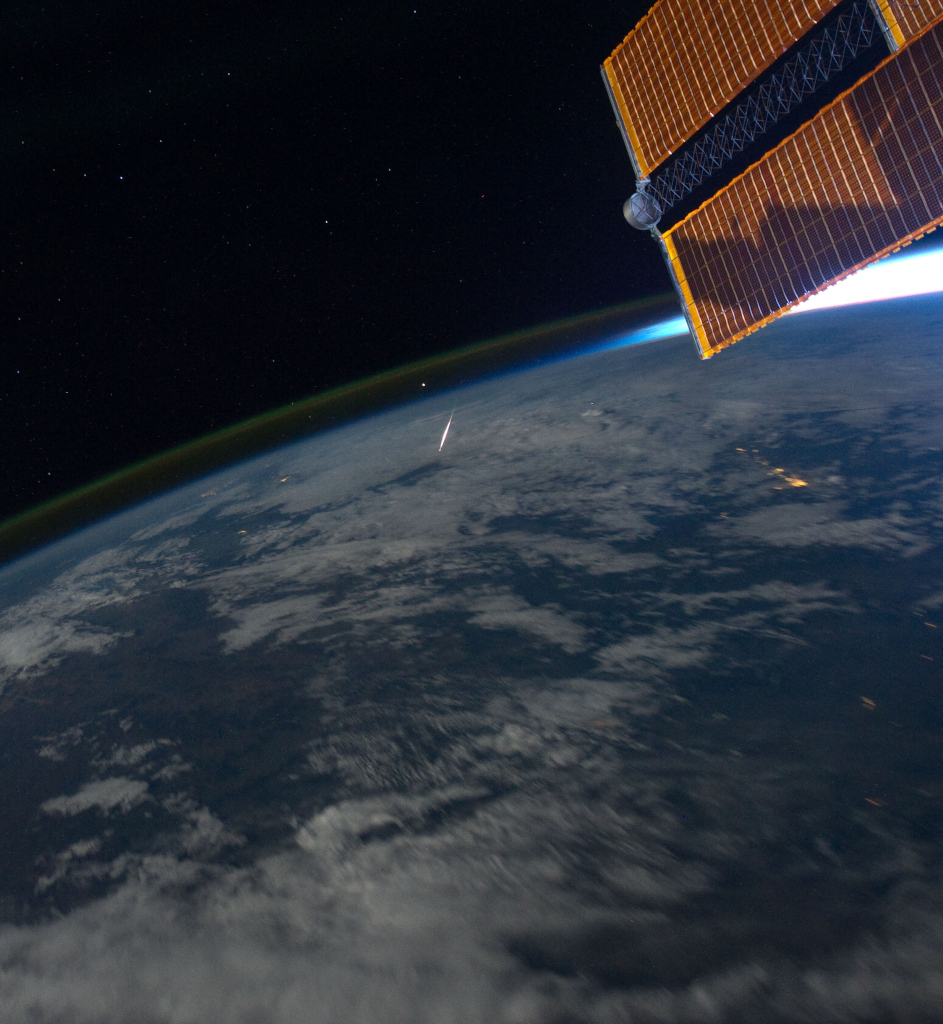下面的英仙座飛碟
A Perseid Below

發表日期:2024-08-09
地球上的居民通常都是抬頭觀看流星雨。但是,宇航員羅恩-加蘭(Ron Garan)在 2011 年 8 月 13 日捕捉到的這一非凡景象,卻是透過俯視捕捉到的英仙座流星。從加蘭在高度約為 380 公里的國際空間站上的視角看,英仙座流星在下方劃過,捲起了斯威夫特-塔特爾彗星上的塵埃。氣化的彗星塵粒以每秒約 60 公里的速度穿過距離地球表面約 100 公里的高密度大氣層。在這種情況下,被縮短的流星閃光位於畫面中心附近,在地球彎曲的邊緣和一層綠色氣流的下方,就在明亮恆星 Arcturus 的下方。想仰望流星雨嗎? 你很幸運, 2024 年英仙座流星雨正在活躍期,預計將在 8 月 12 日達到頂峰。由於沒有明亮月光的干擾,今年您可能會在午夜後晴朗、黑暗的天空中看到許多英仙座流星。
原文:Denizens of planet Earth typically watch meteor showers by looking up. But this remarkable view, captured on August 13, 2011 by astronaut Ron Garan, caught a Perseid meteor by looking down. From Garan's perspective on board the International Space Station orbiting at an altitude of about 380 kilometers, the Perseid meteors streak below, swept up dust from comet Swift-Tuttle. The vaporizing comet dust grains are traveling at about 60 kilometers per second through the denser atmosphere around 100 kilometers above Earth's surface. In this case, the foreshortened meteor flash is near frame center, below the curving limb of the Earth and a layer of greenish airglow, just below bright star Arcturus. Want to look up at a meteor shower? You're in luck, as the 2024 Perseid meteor shower is active now and predicted to peak near August 12. With interfering bright moonlight absent, this year you'll likely see many Perseid meteors under clear, dark skies after midnight.
※ 本文由萌芽機器人自動轉貼自每日一天文圖(Astronomy Picture of the Day,APOD),原文為英文,正體中文是透過 DeepL 翻譯及 OpenCC 進行自動處理,內容僅供參考,若有任何錯誤之處還請見諒!
關於每日一天文圖:每日一天文圖網站是美國國家航空暨太空總署與密西根理工大學提供的服務,網站每天提供一張影像或圖片,並由天文學家撰寫扼要說明其特別之處。